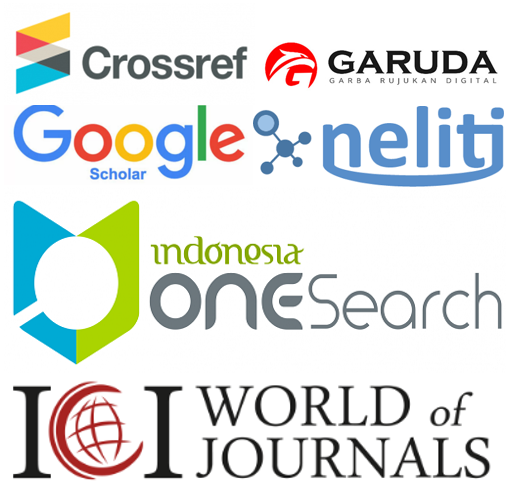Model perhitungan kompleksitas proses sangrai kopi menggunakan biji kopi tradisional Indonesia
DOI:
https://doi.org/10.71452/tzpdsy71Keywords:
Manufacture, Indonesia coffee beans, process complexity, coffee roastingAbstract
The manufacturing process involves converting raw materials into usable products, also applicable in other sectors like coffee roasting. Coffee roasting can be considered a manufacturing process as it involves transforming green coffee beans into roasted coffee beans. Coffee roasting defines 20% - 25% of coffee quality, making a variation in process is impactful. Due to various influential parameters, achieving specific bean specifications adds complexity to the process. Indonesia, a major coffee producer, emphasizes research for enhancing coffee quality, specifically for varieties like Arabica Gayo, Arabica Solok Radjo, Robusta Bengkulu, and Robusta Temanggung. Another underlying factor for this research is the lack of studies related to the complex process of coffee roasting. This research uses the model to calculate the complexity of the manufacturing system in the coffee roasting process. This model is used as a tool to assess the existing process. Furthermore, this model simplifies the calculation of the process complexity, and the resulting index can be used to estimate initial costs during the design phase for the roasting process. This research adopts the method by W.H. El Maraghy regarding complexity modeling and applies it to the scope of coffee roasting. Based on the conducted research, the most important aspects that influence the complexity of roasting coffee beans based on the roast level are roast color, mass, and dimensions resulting from the roast profile of coffee beans. Temanggung Robusta coffee beans were found to have the highest complexity index, with an RPM of 90 and a dark roast level of 9.21.
References
Myhrvold, N. (2022). Coffee | beverage | Britannica. In Encyclopædia Britannica. https://www.britannica.com/topic/coffee.
Kemepenrin. (2017). Peluang Usaha IKM Kopi (pp. 6–11). Kemepenrin. https://kemenperin.go.id/download/17797/Peluang-Usaha-Industri-Kecil-Menengah-Kopi.
Badan Pusat Statistik Indonesia. (2021). Statistik Kopi Indonesia 2021. Jakarta: Badan Pusat Statistik Indonesia.
International Coffee Organization (2021). World Coffee Consumption.
Kemenparekraf. (2021). Indikasi Geografis Kopi Indonesia – Zona Integritas. Pemasaranekraf.kemenparekraf.go.id. https://pemasaranekraf.kemenparekraf.go.id/indikasi-geografis-kopi-indonesia/.
Badan Standardisasi Nasional. (2020, August 15). Diskusi dan Sharing SNI Biji Kopi. https://binaumk.bsn.go.id/uploads/materi/master_file/c0f626e0ab83bbfbb0eaae8c7c5fe0d4.pdf.
El Maraghy, W. H., & Urbanic, R. J. (2003). Modelling of Manufacturing Systems Complexity. CIRP Annals, 52(1), 363–366. https://doi.org/10.1016/s0007-8506(07)60602-7.
Hidayat, D. D., Indriati, A., Andriansyah, C. E., Rahayuningtyas, A., & Sudaryanto, A. (2020). Changes Of Some Engineering Properties of Coffee Beans Due to Roasting Process. Asian Journal of Applied Sciences, 12-21.
Lincoln & York. (2019). How Are Coffee Beans Roasted? | Roasting Coffee | Lincoln & York. www.lincolnandyork.com. https://www.lincolnandyork.com/blog/how-are-coffee-beans-roasted.
PT. SAS Coffee Roaster. (n.d.). Buku Panduan Mesin Roaster SAS.
Budiono, H. D. S., Fausta, M. A., Suputra, O. W., Aditya, T. M., Zuhuda, R. M. (2022). Pengembangan Model Perhitungan Kompleksitas Proses Sangrai Kopi Indonesia Menuju Sistem Otomatisasi. Jurnal Teknik Mesin Indonesia, 18(1), 1-10.
El-Maraghy, W.H. (2006). Assessment of Manufacturing Operational Complexity. University of Windsor, Windsor, Ontario, Canada.
Downloads
Published
Conference Proceedings Volume
Section
License
Copyright (c) 2024 Hendri Dwi Saptioratri Budiono, Rahman Muhamad Zuhuda, Mohammad Anindya Fausta , Oka Widiantara Suputra , Oka Widiantara Suputra , Trimitra Mahesa Aditya (Author)

This work is licensed under a Creative Commons Attribution-NonCommercial 4.0 International License.
Proceeding SNTTM by BKS-TM Indonesia is licensed under Creative Commons Attribution 4.0 International





